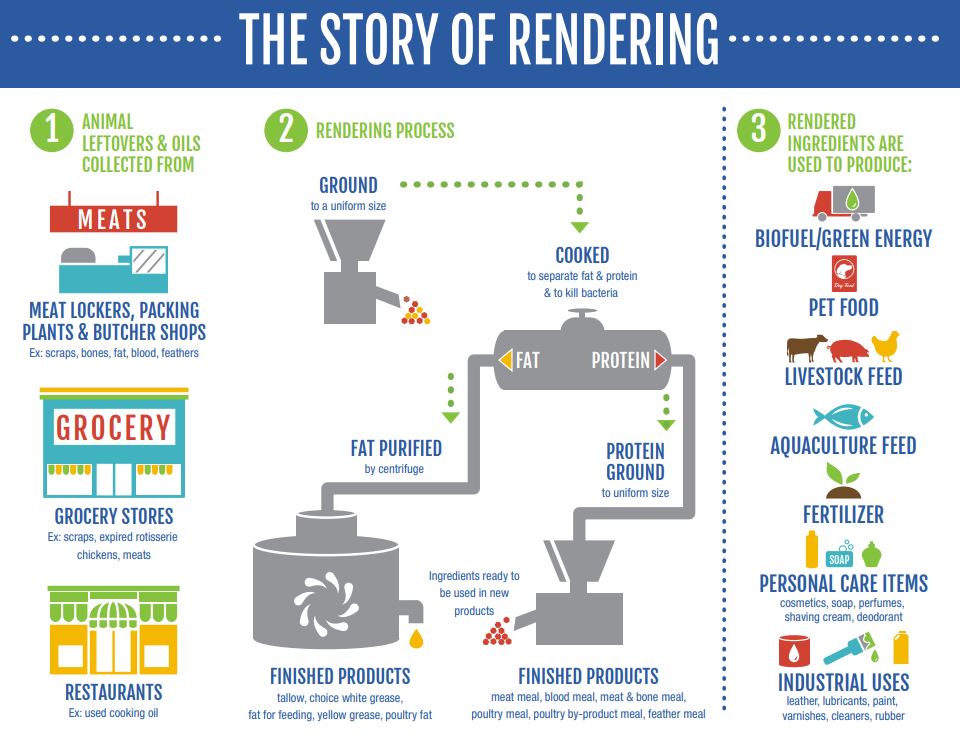How Rendering Works: Boiling Down the 'Invisible Industry'

While everyone looks forward to the main course, there’s an entire industry focused on the “leftovers.”
Known as the “invisible industry” and the “original recycling,” rendering serves as an invaluable piece of the animal agriculture industry and provides a wide range of products.
According to the North American Renderers Association (NARA), nearly 50% of every meat animal is considered waste, including bones, fat, blood, feathers and some internal organs. However, through the process of rendering, animal byproducts take on new life to be used as ingredients in pet and livestock feed, biofuels, fertilizers and many household products, including soap, paints, glue and rubber.
With the inaugural National Rendering Day on April 21, Anna Wilkinson, vice president of communications for NARA, joined AgriTalk host, Chip Flory, to further explain the importance of rendering, especially when it comes to the environmental footprint.
“Not everybody understands rendering,” Wilkinson explains. “So, when a consumer buys a product that uses rendered material, we want them to know that they can feel confident that they're making an environmentally responsible choice.”
While the national day of celebration was created with the hope of bringing awareness to rendering, Wilkinson says it’s also a great way to show appreciation for those in the rendering industry, recognizing the important work they do.
According to NARA, renderers collect 56 billion pounds of raw materials every year in the U.S. and Canada, which are then recycled into 10 billion pounds of fat and oil products and 9 billion pounds of protein products annually.
“Rendering really deserves to be a part of the reduced food waste and sustainability conversation,” Wilkinson notes. “It really is a circular process, and we feel we can help educate on why that is.”
The rendering process returns 3.7 billion gallons of clean water to rivers and streams, and reduces greenhouse gases, according to NARA, by avoiding carbon dioxide, methane, and other greenhouse gas emissions from natural decomposition like in a compost pile or landfill. Specifically, the process of rendering sequesters five times the amount of GHGs than what is produced, and rendered biofuel products produce 80% less carbon emissions than the alternative petroleum diesel, NARA says.
While the environment and sustainability are key benefactors of rendering, it’s also important to note that the industry is financially stable and economically provides $10 billion annually, helping contribute to food security through the production of livestock feed and fertilizers, as well as supporting thousands of full-time jobs with benefits, many in rural areas.
For more information on rendering, visit NARA’s website.









